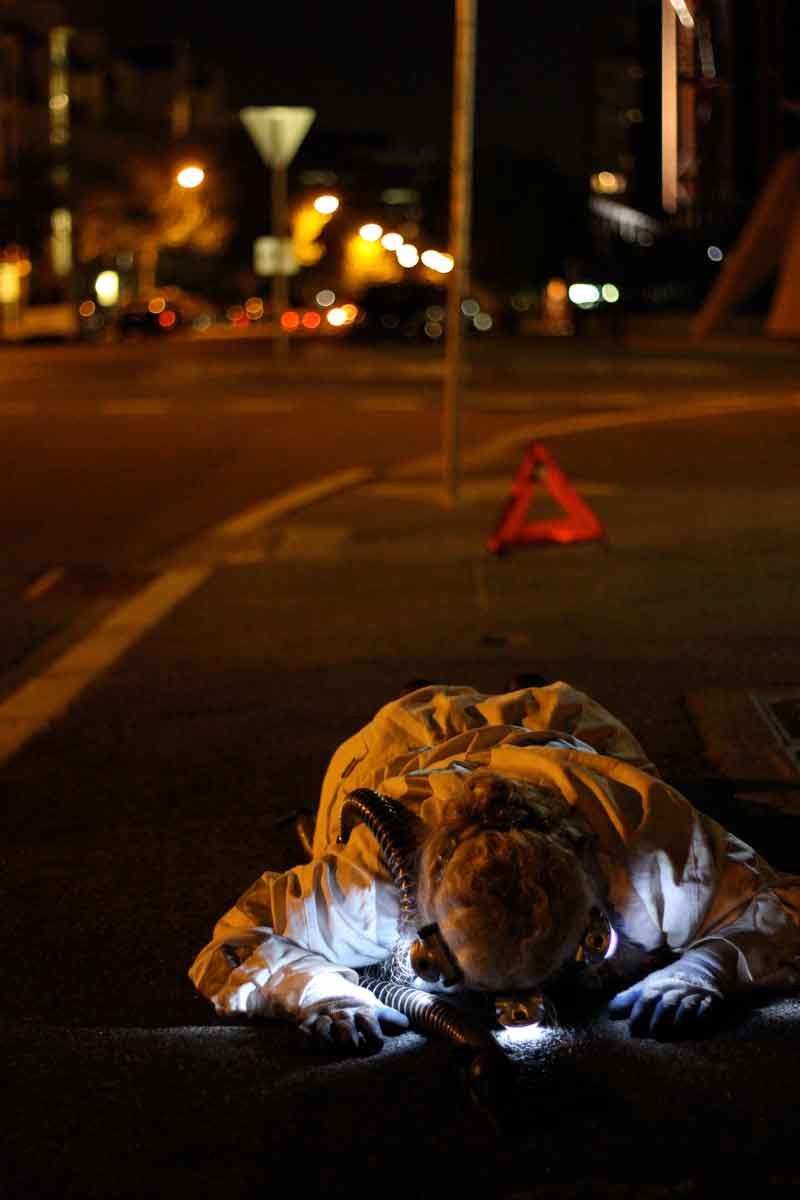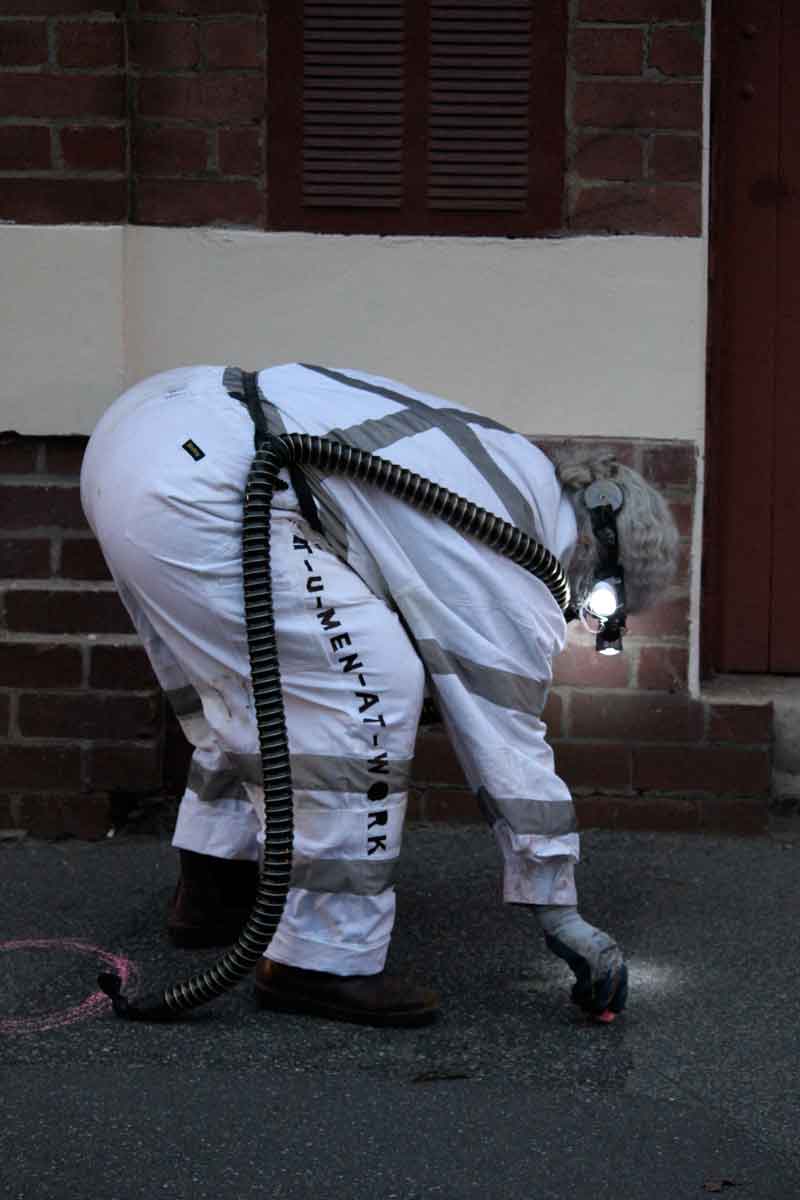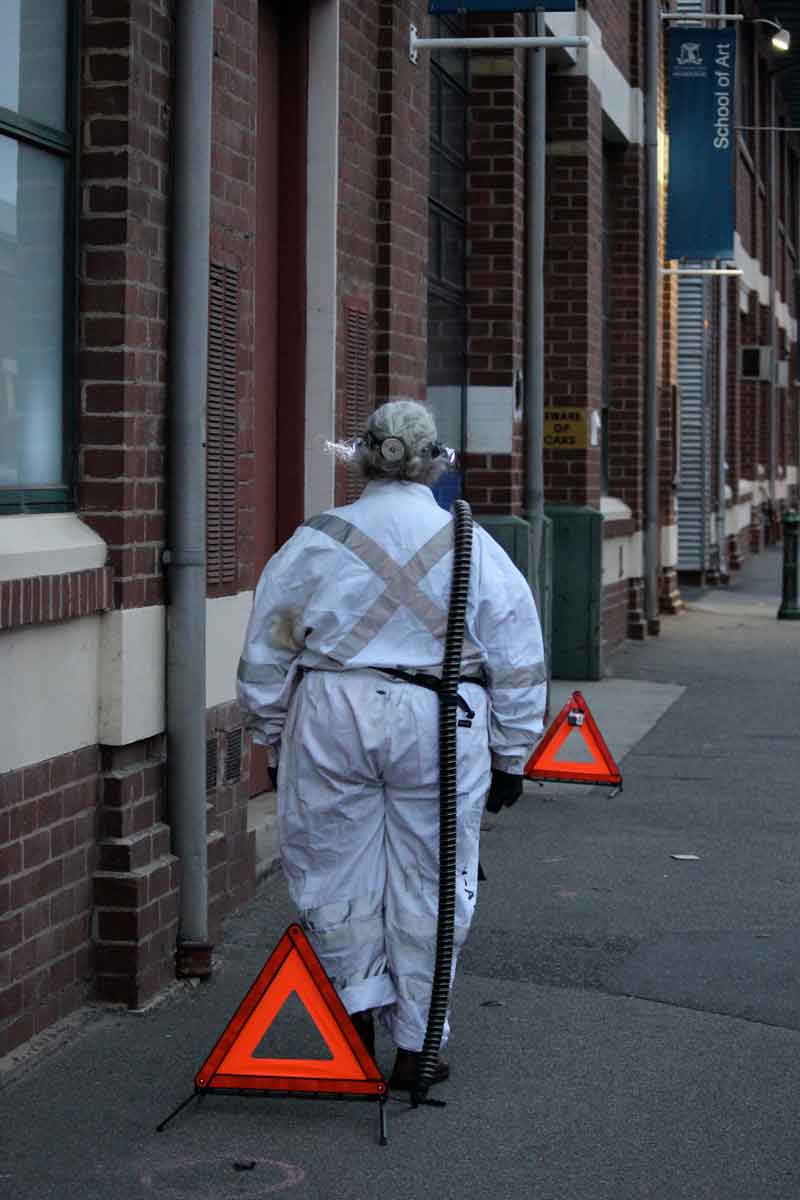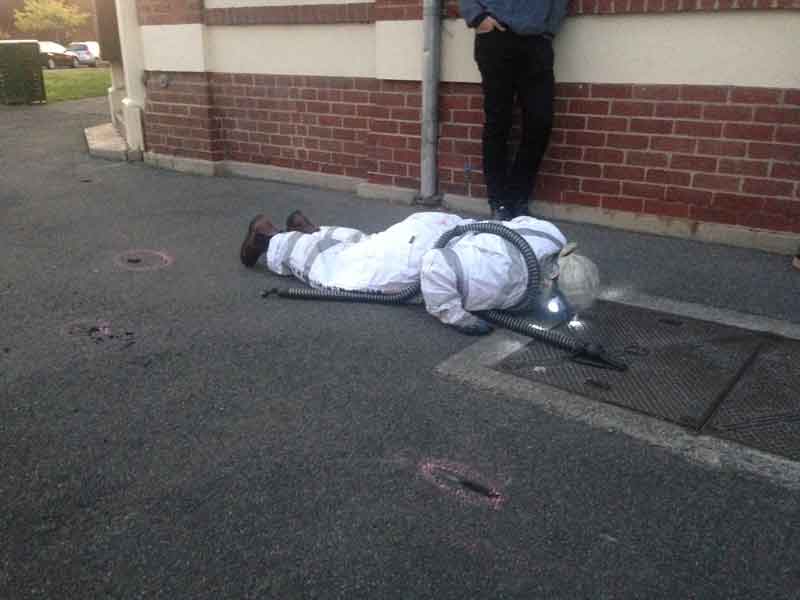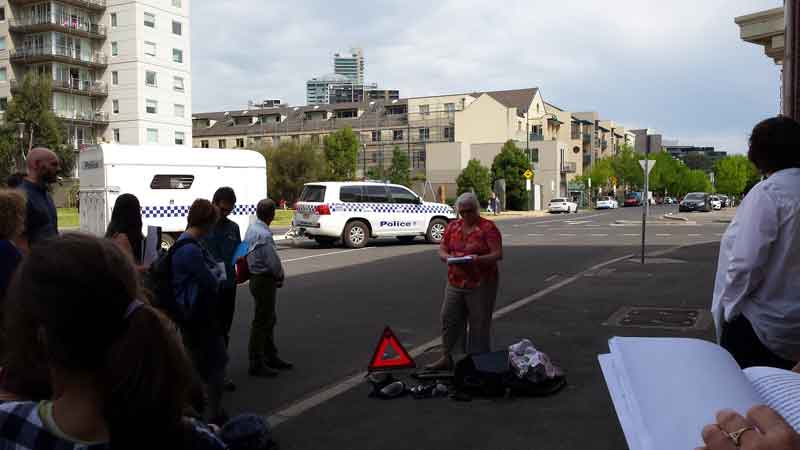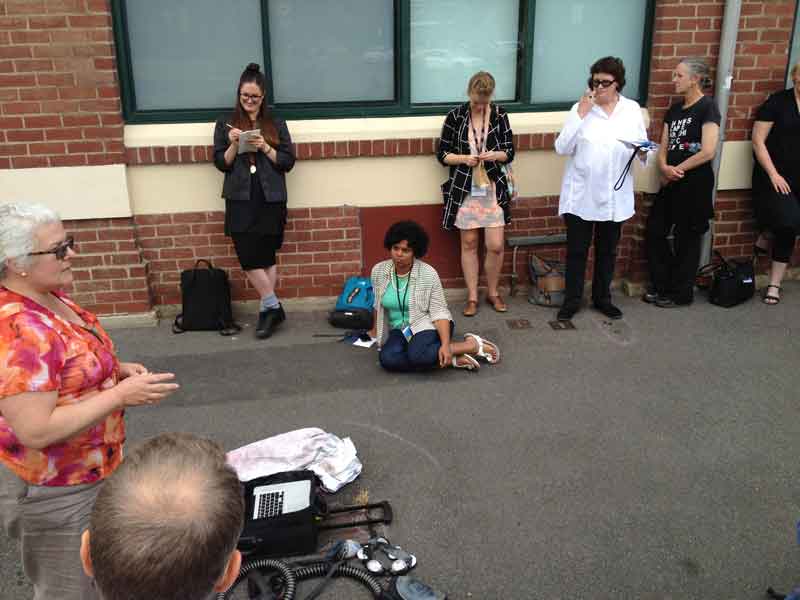BIT-U-MEN-AT-WORK
< 2/14 >
Julieanna Preston and Jen Archer-Martin
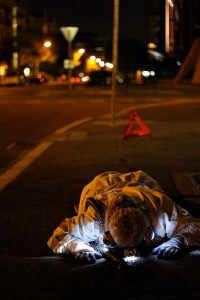
COMPANION CURATOR > Laurene Vaughn
RESPONDENT > Smiljana Glisovic
Exploring empathetic relations between a human body, a road resurfacing machine and bitumen asphalt.
Discourses and practices in the realm of make and repair are typically gendered and domesticated – situated somewhere near or within the home. Often driven by the actions by both skilled and unskilled labourers, these practices have foundations in frugality, need, moral value, or material scarcity. Propelled by issues of sustainability and idealisation of the local, vernacular or artisan, there has been a recent resurgence of interest in how we craft and make the material world. These localised acts have served as critiques of globalisation, mechanisation and dehumanisation – a separation between bodies, people, the manufactured and distributed worlds.
Julieanna Preston’s site-specific intervention, Bit-u-men-at-work, serves to explicate the machine-like devouring needs of perpetual mobility that our road systems manifest. The freeway, the highway, the road or the lane – across scales of distance and efficiency – these are the bitumen veins of mobility. Ever present, these are the norms of our landscape, and in Australia they run the periphery of the mainland and are repeated on our smaller islands. These veins seem to hold us together; a bitumen veiny network that is in a constant state of repair, being made by road teams, and being unmade by the vehicles that pound across its surfaces.
Respondent > Smiljana Glisovic
Reflectors, torches, visibility markings, and traffic cones make up this work. Sounds of steam and engine and reverse gear signals mark the processes undertaken in repairing a road. All of these things work to focus the audience’s attention both on the road itself and the process of repair which the artist/machine enacts. The artist is not playing or imitating a road resurfacing machine. Her human contours are accentuated by the white boiler-suit. Sounds of affection and longing that follow the sounds of steam consistently undermine any real attempt for the artist to fully become the machine. And though she makes sounds that might echo what a road resurfacing machine sounds like, she is not trying to pass for likeness. Rather, she gives the machine her own flesh and her own breath and takes from the machine its functional qualities. One does not collapse into the other: neither woman-machine nor machine-woman. Empathy and agency are difficult to locate.
This is not an anthropocentric expression of feelings shared between machine and asphalt. The artist as machine/woman-woman/machine, in the act, creates moments where artist, machine and asphalt are experienced together. But still I want to write of smells and mouths, of being close, of skins touching – because this is how the road and machine/woman-woman/machine come to know one another.
The spectacle of resurfacing roads is reimagined as an intimate act, performed as a sensuous experience. The figure murmurs lovingly to the road, heaves and undulates over the markings that need attention, speaks to it in indecipherable loving tones, caresses it, warms it and humps it with her belly. But to say ‘belly’ and to gender it is to lean too heavily on the human and on dominant structures that try to order the world. There is a kind of perversity in this sensuality which induces discomfort – the interchangeable qualities of human and machine, of textures, the soft and hard, the organic and inorganic. This is a private and intimate moment unfolding in public. This intimacy complicates the relations between road, machine, and human. The human voice sounds the machine, heaving and spluttering in its labour. The artist embodies the machine but also bodies-forth human desires.
The labour of the work in resurfacing a road is emphasised here by way of time. There are numerous stages involved in road repair: identifying the parts that need repair, marking those areas, covering the imperfections with cement, pressing them in. In this particular performance, the work was painstaking in the time it took, but it was not systematic. The work of resurfacing was messy. The task and labour took on agendas other than the functional. The objectives seem displaced from resurfacing parts of a road that need fixing, to another kind of intention that is complicated with human desire. These are performative acts as opposed to enacted tasks. This is vital: the audience must endure this work so that they might access these indeterminate spaces of human, machine and road as they are held together by flesh, breath and bitumen.

